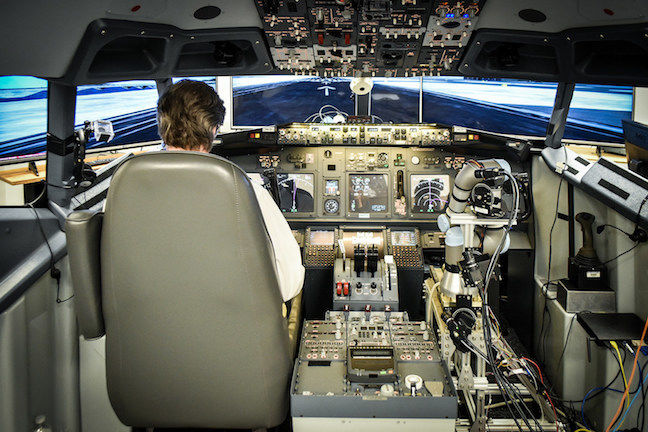Ethiopia sits on 737 Max report but says pilots followed Boeing drills

Ethiopia’s transport minister has said the national carrier’s pilots were following published Boeing procedures immediately before the fatal crash of a 737 Max 8 in March, citing an unpublished government report.
During a press conference this morning, transport boss Dagmawit Moges said: “The crew performed all the procedures repeatedly provided by the manufacturer but was not able to control the aircraft.”
The preliminary report is expected to contain early findings on why Ethiopian Airlines flight ET302 crashed on 10 March, killing all 157 people aboard. International treaties on air crash investigations mean that aviation safety reports do not normally assign blame or liability for a particular incident.
Dagmawit continued, as reported by Reuters: “Since repetitive uncommanded aircraft nose down conditions are noticed… it is recommended that the aircraft control system shall be reviewed by the manufacturer.”
Ethiopian Airlines Aviation Group said in a statement that its pilots “have followed the Boeing recommended and FAA approved emergency procedures to handle the most difficult emergency situation created on the airplane”.
CEO Tewolde GebreMariam added: “We are very proud of our pilots’ compliances to follow the emergency procedures and high level of professional performances in such extremely difficult situations.”
The press conference will turn more attention onto Boeing’s controversial MCAS software system, which is suspected to have played a role in both fatal crashes.
Boeing sends chief exec for a spin
Boeing, meanwhile, issued a press release last night showing chief exec Dennis Muilenberg being flown in a 737 Max 7. Although this is not technically the same model as the 737 Max 8, it is very closely related – and still features the controversial MCAS system.
Dennis Muilenburg, @BoeingCEO, experienced first-hand our MCAS software update performing safely in action during a 737 MAX 7 demo flight today.
More about the proposed MCAS software update here: https://t.co/TJrfcYG4ok pic.twitter.com/OcCiMnc7I5
— The Boeing Company (@Boeing) April 3, 2019
Earlier this week a patch for MCAS was delayed as the American aviation regulator, the FAA, inspected it. In the meantime, Boeing has published a webpage with information about MCAS.
MCAS works by taking its input from one of a pair of angle-of-attack sensors mounted by the aircraft’s nose. If the jet is under manual control (i.e. the autopilot is not switched on) and its flaps are up, and the angle-of-attack is increasing, MCAS automatically adds nose-down trim in 10-second bursts. This pushes the nose downwards, helping avoid a stall caused by climbing at too steep an angle and with too little speed. A fuller explanation is towards the end of this previous Reg article.
According to Boeing, the patch will do the following:
- Flight control system will now compare inputs from both AOA sensors. If the sensors disagree by 5.5 degrees or more with the flaps retracted, MCAS will not activate. An indicator on the flight deck display will alert the pilots.
- If MCAS is activated in non-normal conditions, it will only provide one input for each elevated AOA event. There are no known or envisioned failure conditions where MCAS will provide multiple inputs.
- MCAS can never command more stabilizer input than can be counteracted by the flight crew pulling back on the column. The pilots will continue to always have the ability to override MCAS and manually control the airplane.
Speculation has mounted that the pilots of the crash aircraft failed to notice the trim wheels moving under commands from MCAS because they stopped and started. A graph from the Indonesian crash investigation showed MCAS operating 33 times in seven minutes during the fatal flight, with the crew trying to undo its changes each time it activated.
Ethiopian Airlines’ GebreMariam said: “All of us at Ethiopian Airlines are still going through deep mourning for the loss of our loved ones and we would like to express our deep sympathy and condolences for the families, relatives and friends of the victims.” ®
Sponsored: Cloud Security: From Start Point to End Point
READ MORE HERE
